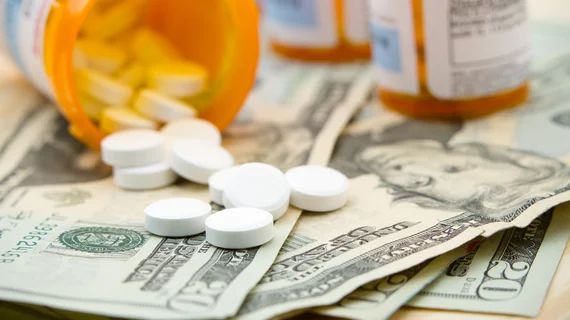Mandating pharmaceutical companies to disclose drug prices as part of Direct-to-Consumer Pharmaceutical Advertising (DTCPA) may reduce consumer interest in high-priced drugs. But the inclusion of modifiers indicating consumers will have zero out-of-pocket costs weakened the finding, according to the results of a behavioral experiment published in JAMA Internal Medicine.
The findings come at a time when the Trump administration has taken several approaches to lower drug prices, including a proposal to force drugmakers to publish their prices in advertisements. Under this approach, drugmakers would publish the list prices of their drugs, which often do not reflect out-of-pocket costs for consumers with private or public insurance coverage. Congress has also taken an interest in rising drug prices, recently launching an broad investigation.
The researchers, led by Ge Bai, PhD, CPA, of the Johns Hopkins Carey Business School in Baltimore, recruited the study cohort of 580 participants who were asked to assume they were recently diagnosed with type 2 diabetes. They viewed advertisements for Mayzerium—a fictitious diabetes prescription drug.
The advertisement in the control condition mimicked the current practice of not mentioning the drug price. The other four advertisements disclosed a low or high monthly price. In two modifier conditions, the advertisement included a statement that eligible patients may be able to get Mayzerium for as little as $0 per month.
The participants completed a questionnaire to measure the likelihood (ranging from 1, or highly unlikely, to 7, or highly likely) of asking their physicians about the drug, asking their insurer about the drug, researching the drug online, and taking the drug. They were also queried about their expected out-of-pocket cost and the perceived efficacy of the drug (ranging from 1, or highly ineffective, to 7, highly effective).
“For the low-priced drug, the price disclosure, with or without the modifier, did not alter consumer responses,” Bai and colleagues noted.
For the high-priced drug, the price disclosure “significantly reduced” the likelihood of participants asking their physician about the drug (5.12 vs. 2.90), asking their insurer about the drug (5.01 vs. 4.09), researching the drug online (5.94 vs. 4.92), and taking the drug (4.93 vs. 3.24).
Consumer responses for high priced drugs when the modifier was included were: ask their physician about the drug (2.90 vs. 4.48), ask their insurer about the drug (4.09 vs. 4.85), research the drug online (4.92 vs. 5.74), and take the drug (3.24 vs. 4.36).
Participants did not view the low-priced drug as “significantly less effective” that the high-priced drug.
“Although many challenges remain in designing the ultimate US Food and Drug Administration regulation, our results suggest that requiring pharmaceutical companies to disclose the price in DCTPA can be potentially effective in reducing consumer interest in high-priced drugs, but the inclusion of modifiers in these disclosures can reduce or eliminate the influence of disclosure,” Bai and colleagues concluded.

